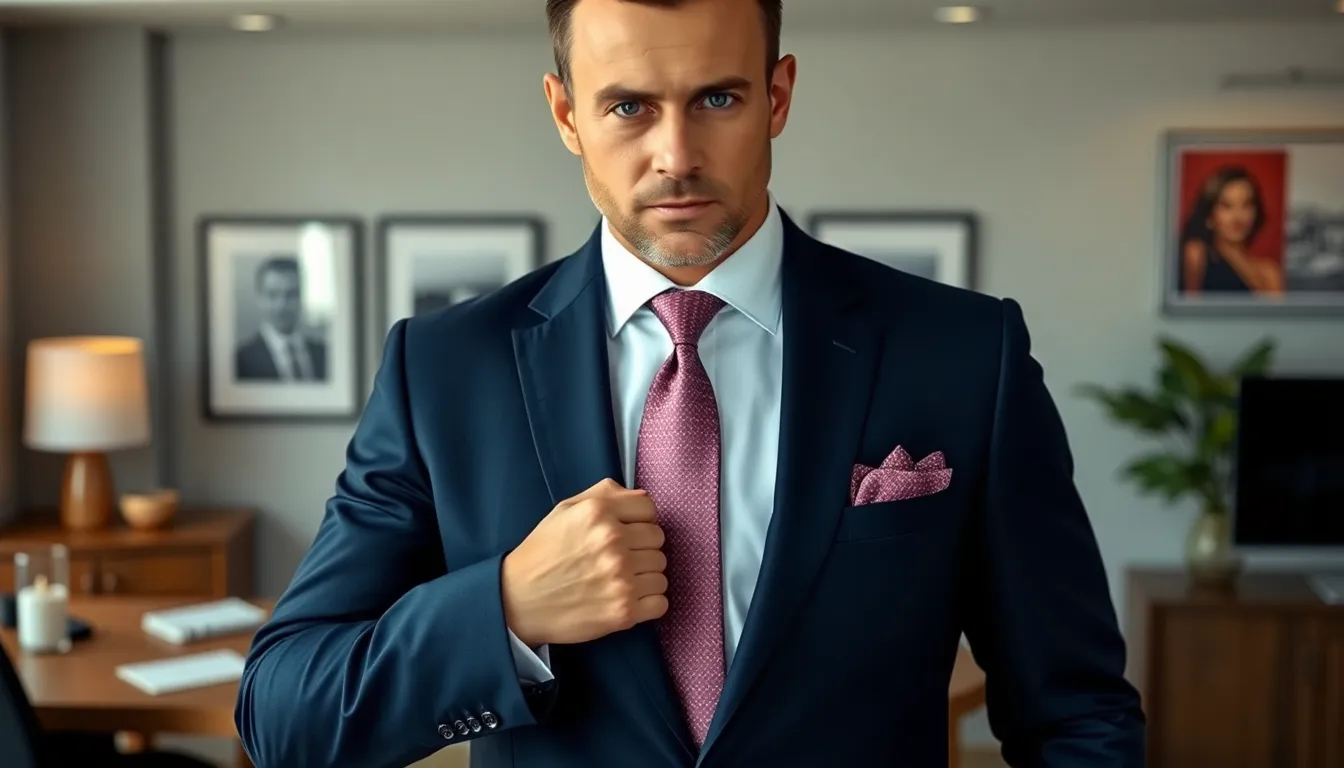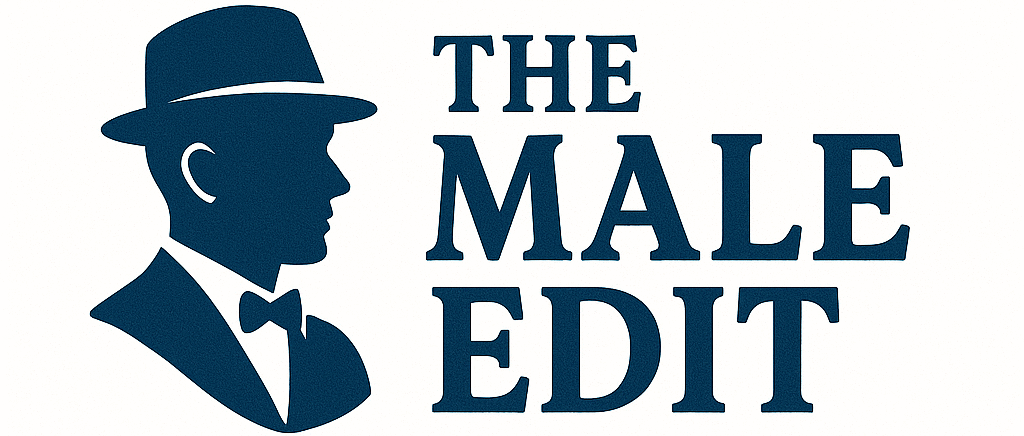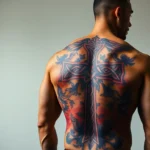We’ve all stood in front of our closets wondering what defines proper business attire in today’s evolving workplace. The lines between formal and casual continue to blur, leaving many men uncertain about what constitutes appropriate office wear. Getting it right isn’t just about following dress codes—it’s about projecting confidence and professionalism that can impact your career trajectory.
Understanding business attire fundamentals helps you navigate everything from first-day jitters to important client meetings. We’ll explore how the right clothing choices communicate competence before you even speak, and why investing in quality pieces pays dividends in professional settings.
Whether you’re entering the corporate industry for the first time or updating your work wardrobe, mastering business attire gives you one less thing to worry about each morning. Let’s jump into the essential elements that’ll have you looking sharp and feeling confident in any office environment.
Essential Business Suit Styles Every Professional Man Should Own
Building a professional wardrobe starts with selecting the right suit styles that’ll serve you well across various business situations. We’ve identified three fundamental suit styles that form the foundation of every successful professional’s closet.
The Classic Navy Business Suit
Navy suits represent the gold standard of business attire for men’s office wear. We consider this the most versatile color choice because it works seamlessly with virtually any dress shirt and tie combination. Professional men can wear navy suits for everything from client meetings to networking events without ever looking out of place.
The deep blue color flatters all skin tones and body types while maintaining a sophisticated appearance. Navy suits pair beautifully with white dress shirts for traditional looks or light blue shirts for more contemporary styling. You’ll find that this suit works equally well with brown leather shoes or black dress shoes depending on the occasion.
Corporate professionals should invest in a navy suit with a classic cut that won’t go out of style. We recommend choosing a wool blend fabric that maintains its shape throughout long workdays while providing comfort and breathability.
The Versatile Charcoal Gray Suit
Charcoal gray suits offer incredible flexibility for today’s business professional. We appreciate how this color bridges the gap between formal and business casual environments while maintaining executive presence. Modern offices often favor charcoal suits because they appear less formal than black while still commanding respect.
This suit style works exceptionally well during fall and winter months when darker colors complement the season. Charcoal gray pairs effortlessly with both warm and cool colored accessories including burgundy ties, navy pocket squares, and silver cufflinks. Business professionals can transition these suits from day meetings to evening events by simply changing their shirt and tie combinations.
The neutral tone allows for creative styling options while keeping your look professional. We suggest selecting a charcoal suit with subtle texture or pattern details to add visual interest without compromising workplace appropriateness.
The Timeless Black Suit for Formal Occasions
Black suits serve as the cornerstone of formal business attire when traditional navy or gray options won’t suffice. We recommend this style specifically for evening business events, formal presentations, or high stakes meetings where you need to project maximum authority. Executive level professionals often choose black suits for board meetings and important client presentations.
This suit style demands careful attention to accessories since black can appear stark without proper styling. Black suits look best with crisp white dress shirts and sophisticated tie choices in silver, deep red, or subtle patterns. Professional men should pair these suits exclusively with black leather dress shoes and matching belts for a cohesive appearance.
The formal nature of black suits makes them less suitable for everyday office wear but essential for special occasions. We advise investing in a well customized black suit that fits impeccably since the stark color reveals any fitting issues more readily than navy or gray alternatives.
Professional Dress Shirt Options for the Modern Workplace

Selecting the right dress shirt serves as the foundation for building a polished business wardrobe that complements our essential suit collection. These shirt options provide the versatility needed to adapt to various office environments while maintaining professional standards.
Crisp White Dress Shirts as Wardrobe Staples
White dress shirts remain the cornerstone of professional men’s wardrobes across all business settings. We consider these shirts essential because they provide a clean, polished foundation that works with virtually any business look. Pairing effortlessly with suits, blazers, and sport coats makes white shirts incredibly versatile for daily office wear.
Investing in quality white dress shirts delivers exceptional value through their timeless appeal and broad compatibility. We recommend having at least three high-quality white shirts in rotation to ensure consistent professional appearance. Business casual combinations featuring white shirts create sharp, authoritative looks that command respect in any workplace environment.
Proper fit transforms white dress shirts from basic garments into powerful style statements. We suggest selecting shirts with appropriate collar styles that complement face shapes while ensuring proper sleeve length and torso fit. Maintaining crisp, wrinkle-free appearance requires quality fabrics and proper care techniques.
Light Blue Shirts for Versatile Styling
Light blue dress shirts offer a softer, more approachable alternative to traditional white options while maintaining professional standards. We find these shirts highly adaptable for both conservative and creative office environments. Complementing a wide range of suit colors makes light blue shirts invaluable wardrobe additions.
Modern workplace cultures increasingly embrace the refined sophistication that light blue shirts provide. We observe that these shirts create welcoming impressions during client meetings and team collaborations. Business attire featuring light blue shirts strikes the perfect balance between professionalism and approachability.
Strategic color coordination maximizes the versatility of light blue dress shirts across different business scenarios. We recommend pairing these shirts with navy suits for classic combinations or charcoal gray suits for contemporary looks. Accessory choices become more flexible when building outfits around light blue shirt foundations.
Subtle Pattern Shirts for Added Interest
Shirts with subtle patterns introduce variety while maintaining workplace appropriateness in professional settings. We identify microchecks, thin stripes, and faint windowpanes as excellent pattern choices that add visual interest. Personal expression becomes possible without sacrificing the polished appearance required in business environments.
Contemporary business attire trends favor minimal patterns that support versatile wardrobe mixing and matching capabilities. We emphasize selecting patterns that remain subtle enough for formal occasions yet distinctive enough for creative expression. Office occasions benefit from the fresh, modern twist that thoughtfully chosen patterns provide.
Pattern selection requires careful consideration of existing wardrobe pieces to ensure seamless integration with current business attire. We recommend starting with one or two patterned shirts before expanding pattern variety in professional wardrobes. Solid colors and minimal patterns work together to create sharp, business appropriate appearances that reflect current workplace fashion trends.
Choosing the Right Business Tie and Accessories

Professional accessories complete your business attire and demonstrate attention to detail that colleagues and clients notice. We’ll explore the essential elements that elevate your professional appearance.
Classic Tie Patterns and Colors
Silk ties remain the gold standard for professional business settings and offer the most refined appearance. Stripes create a timeless look that works across industries, while dots add subtle visual interest without overwhelming your outfit. Geometric patterns provide modern sophistication when chosen in conservative scales and colors.
Navy ties offer unmatched versatility and pair beautifully with both light and dark suits. Gray selections complement charcoal suits perfectly while maintaining a professional aesthetic. Burgundy adds warmth to your wardrobe and works exceptionally well with navy and gray suits.
Neutral colors ensure your tie collection remains functional across different business situations. Conservative patterns like thin stripes or small dots integrate seamlessly with patterned dress shirts. Bold patterns should be reserved for solid colored shirts to maintain visual balance.
Pocket Squares and Lapel Pins
Simple folds create clean lines that enhance your suit’s structure without drawing excessive attention. Patterned squares introduce subtle color coordination when they complement your tie selection. White cotton or linen pocket squares provide classic elegance that works with any suit color.
Minimalist lapel pin designs maintain professionalism while adding a touch of personality to your business attire. Company logos or professional association pins demonstrate organizational pride appropriately. Avoid oversized or flashy designs that might distract from your overall professional appearance.
Coordinate your pocket square with your tie color rather than matching them exactly. Subtle contrast creates visual interest while maintaining sophisticated restraint. Remember that pocket squares should enhance your outfit rather than dominate it.
Professional Cufflinks and Watches
Simple cufflink designs in silver or gold materials provide the most versatility for business settings. Geometric shapes like squares or circles offer modern sophistication without appearing too casual. Avoid novelty designs or excessive ornamentation that might undermine your professional credibility.
Classic leather watch straps in black or brown leather complement traditional business attire beautifully. Metal bracelet watches in stainless steel or gold tones work well with contemporary office environments. Choose watches with clean faces and minimal complications for the most professional appearance.
Quality accessories demonstrate your commitment to excellence and attention to professional standards. Invest in pieces that coordinate with your existing wardrobe rather than requiring exact outfit combinations. Well chosen accessories enhance your business attire investment and contribute to your overall professional image.
Footwear Fundamentals for Business Attire

Your professional appearance isn’t complete without the right footwear foundation. Quality shoes anchor your entire business look and communicate attention to detail that colleagues and clients notice immediately.
Oxford Dress Shoes for Formal Settings
Oxford dress shoes represent the pinnacle of business formal footwear with their distinctive closed lacing system. These sleek, polished shoes feature a streamlined silhouette that pairs perfectly with dark suits and creates an authoritative presence in professional environments.
Black leather Oxfords serve as the most versatile option for business formal settings, complementing navy, charcoal, and black suits seamlessly. Brown Oxford variations offer warmth and sophistication, particularly when matched with lighter suit colors or during daytime business events.
We recommend investing in quality leather construction and regular polishing to maintain the refined appearance that Oxford shoes demand. The closed lacing design creates a cleaner line than other dress shoe styles, making them essential for client meetings, presentations, and formal business occasions.
Derby Shoes for Business Casual Days
Derby shoes feature an open lacing system that provides a slightly more relaxed aesthetic while maintaining professional standards. This versatile design bridges the gap between formal dress shoes and casual footwear, making them perfect for business casual environments.
Open lacing allows for better foot accommodation and comfort during long workdays, while still projecting a polished appearance. Derby shoes pair exceptionally well with chinos, wool trousers, and dress pants, offering flexibility for varying business casual dress codes.
We suggest choosing Derby shoes in classic brown or black leather finishes to maximize their versatility across different outfit combinations. These shoes work particularly well in creative industries or modern office settings where traditional formality has relaxed without sacrificing professionalism.
Loafers for Contemporary Office Environments
Loafers bring effortless sophistication to smart casual and business casual settings with their convenient slip-on design. These shoes excel in contemporary office environments where comfort and style intersect, particularly when crafted from polished leather or refined suede materials.
Penny loafers and tassel loafers offer classic styling that works beautifully with chinos, dress trousers, and even well-fitted dark jeans in relaxed office cultures. The absence of laces creates a streamlined look that feels modern while maintaining professional credibility.
We recommend selecting loafers with quality construction and refined finishes to ensure they meet professional standards. Suede options in navy, brown, or gray provide texture and visual interest, while polished leather versions offer maximum versatility for transitioning between casual and more formal business situations.
Building a Capsule Wardrobe for Office Wear

Creating a strategic capsule wardrobe eliminates decision fatigue while ensuring you’re always appropriately dressed for your workplace. We’ll focus on versatile pieces that work across different dress codes and maximize your investment.
Core Pieces Every Professional Needs
Suits form the foundation of any professional wardrobe, with 1-2 customized suits in navy or charcoal providing maximum versatility. Navy suits work seamlessly across business professional and formal settings, while charcoal options bridge corporate and creative environments effectively.
Dress shirts deserve important attention in your wardrobe planning, with 3-5 quality shirts in white, light blue, or subtle patterns creating endless combination possibilities. White shirts serve as your most versatile option, pairing effortlessly with any suit color or tie selection.
Silk ties complete your formal look when business professional attire is required, with 2-3 carefully selected ties in complementary colors improving your suit rotation. Navy, burgundy, and gray ties offer the greatest flexibility across your existing pieces.
Wool trousers and chinos expand your options for business casual environments, with 2-3 pairs in neutral tones like navy, gray, or khaki working with various shirt and jacket combinations. Quality wool trousers maintain their shape better than synthetic alternatives while offering superior comfort.
Sport coats add sophistication to business casual outfits, with 1-2 blazers in navy or gray providing layering options that elevate simpler combinations. These pieces work over dress shirts, knitwear, and even quality polo shirts in relaxed office settings.
Professional footwear anchors your entire look, requiring 1-2 pairs of dress shoes or loafers in brown or black leather that complement your trouser and suit selections. Oxford dress shoes work best with formal suits, while loafers offer versatility in business casual environments.
Knitwear provides layering versatility during cooler months, with 2-3 sweaters in neutral colors like gray, navy, or cream working over dress shirts and under sport coats. Merino wool sweaters offer the best combination of warmth, breathability, and professional appearance.
Mixing and Matching Strategies
Neutral color palettes maximize combination potential across your entire wardrobe, allowing each piece to work with multiple others rather than creating isolated outfits. We recommend building around navy, gray, white, and light blue as your core colors.
Layering creates visual interest while adapting your look to different seasons and formality levels throughout the year. Start with a quality dress shirt, add knitwear for warmth, and finish with a sport coat or suit jacket as needed.
Texture mixing elevates simple combinations without requiring bold colors or patterns that might limit versatility. Combine smooth wool trousers with textured knitwear, or pair a subtle pattern shirt with solid suit pieces.
Seasonal rotation keeps your wardrobe fresh while ensuring appropriate fabric weights for weather conditions. Store heavier pieces during warmer months and lighter fabrics during winter to maintain an organized, functional closet.
Quality maintenance extends garment life and ensures professional appearance standards, with regular pressing, proper storage, and timely repairs keeping your capsule wardrobe looking sharp year-round.
Seasonal Adaptations for Year-Round Style
Spring and summer require lighter fabric weights to maintain comfort in warmer weather, with cotton and linen blend shirts replacing heavier options while maintaining professional standards. Breathable dress shirts and lighter wool trousers work better than synthetic materials during hot months.
Linen blend trousers offer summer sophistication in business casual environments, providing comfort and breathability while maintaining a polished appearance. Choose neutral colors that coordinate with your existing shirt and jacket collection.
Fall and winter demand heavier wool suits and layering pieces that provide warmth without sacrificing professional appearance. Superfine wool suits offer superior comfort and sharp appearance during colder months while maintaining breathability.
Seasonal footwear transitions enhance both comfort and style throughout the year, with lighter leather options for summer and weather-resistant choices for winter conditions. Loafers work well in warmer weather, while dress shoes with rubber soles provide better traction during winter months.
Layering systems adapt to temperature changes throughout the day and season, allowing you to add or remove pieces as needed. Start with quality base layers, add knitwear for warmth, and finish with customized outerwear that complements your professional image.
Fabric care adjustments ensure your garments maintain their appearance across different weather conditions, with proper storage preventing damage from humidity, temperature changes, and seasonal pests. Regular professional cleaning maintains fabric integrity and extends garment life significantly.
Business Casual vs. Formal Business Dress Codes

Distinguishing between business casual and formal business dress codes is crucial for making the right impression in your workplace. Understanding these differences helps you navigate various professional situations with confidence and appropriate attire.
Business casual combines professionalism with a relaxed approach to office wear. This dress code typically includes jeans or chinos as bottoms, paired with button-down shirts and occasionally sport coats. Sneakers are acceptable in many business casual environments, though loafers or boots create a more polished appearance. The flexibility of business casual allows for personal expression while maintaining workplace appropriateness.
Formal business dress represents the traditional standard of professional attire. This dress code features dark suits, neutral-colored dress shirts, ties, and dress shoes as essential components. Formal business attire is ideal for high-level meetings, client presentations, and formal corporate events where a conservative appearance is expected.
Understanding Your Office Culture
Observing your colleagues and management during interviews provides valuable insight into company dress expectations. We recommend paying attention to what team members wear during your first few days on the job to gauge the office atmosphere. Adapting to your workplace’s exact dress code demonstrates professionalism and helps you integrate seamlessly into the company culture.
Leadership styles often influence office dress codes, with some companies embracing casual environments while others maintain traditional standards. Asking HR about dress code policies during your onboarding process eliminates guesswork and ensures you start on the right foot. Notice how different departments within your organization approach professional attire, as expectations may vary between teams.
Appropriate Attire for Client Meetings
Business casual offices typically require elevated attire for important client meetings. We suggest wearing business professional attire, such as a suit without a tie, to demonstrate respect for external stakeholders. This approach shows you understand the importance of the meeting while maintaining your office’s relaxed culture.
Formal offices demand full suits and ties for client interactions as standard protocol. Conservative color choices in navy, charcoal, or black communicate reliability and professionalism to clients. Ensuring your shoes are polished and your overall appearance is crisp reinforces your commitment to excellence in client relationships.
Dressing for Success in Different Industries
Creative industries embrace more casual attire, allowing jeans and stylish tops as acceptable office wear. Advertising agencies, design firms, and media companies often encourage personal expression through clothing choices. But, maintaining a polished appearance within these relaxed guidelines still matters for professional credibility.
Financial and legal industries maintain formal business attire standards due to their conservative professional nature. Investment firms, law offices, and accounting practices expect traditional suits, ties, and dress shoes as daily requirements. These industries value the authority and trustworthiness that formal attire communicates to clients and colleagues.
Tech industries predominantly favor business casual dress codes, emphasizing comfort and functionality over formal appearance. Silicon Valley companies often allow jeans, sneakers, and casual button-down shirts as standard office wear. Comfort becomes paramount in tech environments where long hours and collaborative work require practical clothing choices.
Grooming and Personal Care for Professional Appearance

Mastering your wardrobe is only half the equation for professional success. Personal grooming and attention to detail complete the polished appearance that commands respect in any business environment.
Maintaining a Polished Look
Clothing forms the foundation of professional appearance, but it’s the details that separate exceptional professionals from the rest. We recommend ensuring every garment is clean, pressed, and completely free from wrinkles or odors before wearing it to work. Shoes require daily attention and should be polished regularly while maintaining good repair to project competence and attention to detail.
Nail care often goes overlooked, yet clean and trimmed nails signal professionalism to colleagues and clients. Daily inspection of your overall appearance helps catch issues like loose threads, missing buttons, or forgotten belt loops before they become workplace distractions. Fresh breath and good personal hygiene create a positive impression during close interactions like meetings or presentations.
Hair and Facial Hair Guidelines
Hair styling should reflect your company’s culture while maintaining a neat and professional appearance throughout the workday. Regular washing keeps hair clean and healthy, while appropriate styling ensures you look put together from morning meetings to evening networking events. Conservative cuts work best in traditional business environments, though creative industries may allow for more contemporary styles.
Facial hair demands consistent maintenance and grooming to avoid appearing unprofessional or unkempt. Trimming beards and mustaches regularly keeps them within appropriate business standards, while clean shaven faces require daily attention to avoid stubble buildup. Company policies may restrict facial hair length, so we suggest checking your employee handbook for exact guidelines.
Attention to Detail in Personal Presentation
Collar and cuff pressing makes an immediate visual impact and demonstrates your commitment to professional standards. Checking for loose buttons or missing threads before leaving home prevents embarrassing wardrobe malfunctions during important business interactions. Belt coordination with your shoes creates a cohesive look that shows attention to style fundamentals.
Accessory selection should remain minimal and coordinated with your overall professional appearance. Watch faces, cufflinks, and tie clips work best when they complement rather than compete with your suit and shirt combination. Personal fragrance, if used, should be subtle and mild to avoid overwhelming colleagues in close quarters or conference rooms.
Budget-Friendly Tips for Building Professional Wardrobes

Building a professional wardrobe doesn’t require very costly when you approach it strategically. Smart shopping decisions and careful planning can help you create a polished business look while staying within your budget.
Investment Pieces Worth the Cost
Suits deserve your biggest investment when building a professional wardrobe. High-quality, versatile suits can be worn frequently across multiple business situations, making them worth the higher upfront cost. Dark suits in navy or charcoal provide the most value since they work for conferences, client meetings, and professional offices.
Dress shirts in neutral colors offer exceptional versatility for your investment. Quality dress shirts can be paired with multiple suits, creating many outfit combinations from just a few pieces. We recommend prioritizing well-made white and light blue shirts that maintain their shape and color after repeated washing.
Quality dress shoes complete your investment foundation. Oxford dress shoes in black or brown leather provide the durability and professional appearance needed for years of office wear. These shoes work with all your suits and can be resoled when worn, extending their lifespan significantly.
Affordable Alternatives for Quality Looks
Second-hand stores provide excellent opportunities for finding gently used professional attire. Thrift stores and online marketplaces often carry high-end suits and dress shirts at fraction of retail prices. Consignment shops in business districts frequently stock quality pieces from professionals updating their wardrobes.
Discount retailers offer surprising quality during seasonal sales. Department stores regularly mark down business attire during end-of-season clearances, allowing you to stock up on essentials. Outlet stores from major brands provide current styles at reduced prices year-round.
Rental services work well for occasional formal needs. Monthly subscription services let you access designer suits and accessories without the full purchase price. This option works particularly well for special events or when transitioning between different dress code requirements.
Shopping Strategies for Maximum Value
Quality over quantity principles guide smart wardrobe building. Prioritizing a few high-quality, timeless pieces creates more professional looks than purchasing many cheaper items. Well-made garments maintain their appearance longer and provide better value per wear.
Versatility considerations maximize every purchase decision. Choose items that can be mixed and matched to create multiple outfits from fewer pieces. Neutral colors and classic styles work together seamlessly, stretching your wardrobe budget further.
Sales and discount timing strategies help you save significantly. Keep an eye out for seasonal sales to stock up on essentials at lower costs. End-of-season clearances, holiday sales, and back-to-school promotions offer the best opportunities for professional attire deals.
Building gradually prevents overwhelming expenses. Start with one quality suit and expand your wardrobe over time rather than purchasing everything at once. This approach allows you to learn what works best for your lifestyle while spreading costs across multiple pay periods.
Common Business Attire Mistakes to Avoid

Even with the best intentions, many professionals unknowingly make wardrobe choices that can undermine their polished appearance. We’ve identified the most frequent missteps that can easily be avoided with proper attention to detail.
Fit and Tailoring Issues
Proper fit forms the foundation of any successful business look. Ill-fitting clothing can instantly detract from even the most expensive garments, making you appear unprofessional regardless of your outfit’s quality. We recommend taking accurate measurements before purchasing any business attire to ensure optimal fit across shoulders, chest, and waist areas.
Sleeves that are too long or short create an immediately noticeable problem. Dress shirt cuffs should extend approximately half an inch beyond your suit jacket sleeves, while trouser length should allow for a slight break at the shoe without creating excessive bunching.
Jacket shoulders represent the most critical fit element that can’t be easily altered. When shoulder seams fall beyond your natural shoulder line, the entire silhouette appears oversized and unprofessional. We suggest prioritizing proper shoulder fit over other alterations, as this adjustment often proves costly and sometimes impossible.
Inappropriate Color and Pattern Combinations
Clashing colors and patterns can destroy an otherwise well-constructed outfit. Mixing multiple bold patterns creates visual chaos that distracts from your professional message. We recommend pairing bold patterns with solid colors to maintain visual balance and sophistication.
Navy suits work exceptionally well with light blue or white shirts and coordinating ties. Charcoal gray suits offer versatility with virtually any shirt color, while black suits require careful consideration to avoid appearing too formal for standard business settings.
Pattern mixing requires understanding scale and proportion. Large patterns should pair with smaller ones, and similar pattern types (stripes with stripes) should be avoided in the same outfit. We suggest starting with one patterned item per outfit until you develop confidence in advanced pattern coordination.
Outdated Style Choices
Fashion trends evolve continuously, and business attire must adapt accordingly. Keeping your wardrobe updated with modern business styles prevents you from appearing out of touch with current professional standards. We recommend regularly reviewing your wardrobe every 12-18 months to identify pieces that may need updating or replacement.
Extremely wide or narrow lapels can date your suits significantly. Classic lapel widths between 3-4 inches remain timeless and professional across various business environments. Trouser styles also shift over time, with current preferences favoring customized fits over extremely loose or tight silhouettes.
Tie widths and patterns can reveal the age of your wardrobe. Modern business ties typically measure 3.25-3.75 inches in width, while overly wide or narrow options can appear dated. We suggest investing in classic patterns and neutral colors that transcend temporary fashion trends while maintaining professional relevance.
Conclusion
We’ve covered the essential elements that make up a successful professional wardrobe for today’s modern workplace. From understanding the foundational suit styles to mastering the art of mixing and matching versatile pieces our comprehensive guide provides everything you need to build confidence through your clothing choices.
Remember that professional dressing isn’t just about following rules—it’s about understanding how to adapt your style to different environments while maintaining your authentic self. Whether you’re working with a tight budget or have more flexibility investing in quality pieces that fit well and can be styled multiple ways will always serve you better than filling your closet with trendy items.
Your professional image starts with how you present yourself each day. By implementing these strategies and avoiding common pitfalls you’ll develop a signature style that commands respect and opens doors throughout your career journey.
Frequently Asked Questions
What are the three essential suit styles every professional man should own?
The three fundamental suit styles are: a classic navy business suit (the gold standard for versatility), a charcoal gray suit (bridges formal and business casual environments), and a timeless black suit (perfect for formal occasions). These three suits provide a comprehensive foundation for any professional wardrobe and can handle diverse business situations.
How many white dress shirts should I have in my professional wardrobe?
You should have at least three high-quality white dress shirts in your wardrobe. White shirts are versatile wardrobe staples that pair well with any suit and tie combination, ensuring you always have a clean, professional option available for important meetings and daily business activities.
What tie colors are most versatile for business attire?
Navy, gray, and burgundy silk ties offer the most versatility for business attire. These classic colors complement the essential suit collection and work well with various shirt colors. Silk is considered the gold standard for business ties due to its professional appearance and durability.
What’s the difference between business casual and formal business dress codes?
Business casual typically includes chinos or dress pants with button-down shirts, while formal business requires dark suits, dress shirts, ties, and dress shoes. The key is observing your workplace culture and colleagues to understand expectations, then adapting your attire to match the company’s professional standards.
What type of shoes are essential for business formal attire?
Oxford dress shoes are the pinnacle of business formal footwear. Black Oxfords are essential for dark suits and formal occasions, while brown Oxfords add warmth and sophistication to lighter suit combinations. Derby shoes work well for business casual, and loafers are perfect for contemporary office environments.
How can I build a professional wardrobe on a budget?
Focus on quality over quantity by investing in 1-2 well-fitted suits in navy or charcoal, 3-5 quality dress shirts, and durable dress shoes. Shop at second-hand stores, discount retailers, and time your purchases during sales. Build your wardrobe gradually to spread costs and prioritize versatile pieces that mix and match easily.
What are the most common business attire mistakes to avoid?
The biggest mistakes include poor fit and lack of proper tailoring, inappropriate color and pattern combinations, and wearing outdated styles. Always ensure clothes fit properly (especially in the shoulders), avoid mixing multiple bold patterns, and regularly review your wardrobe to replace outdated pieces with modern alternatives.
How important is grooming in professional appearance?
Grooming is equally important as clothing in creating a polished professional appearance. This includes maintaining clean, pressed garments, proper shoe care, nail grooming, and personal hygiene. Hair should be neat and align with company culture, and accessories should be coordinated for a cohesive, professional look.







